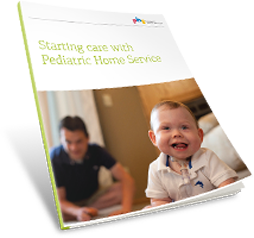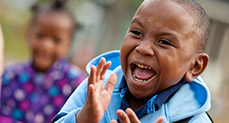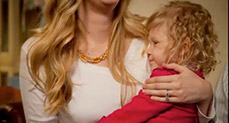A Multifaceted Process: Transitioning a Medically Complex Child into Adulthood
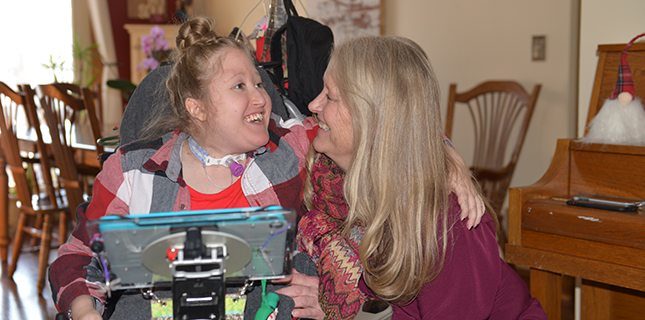
Complex Child Magazine just came out with the March edition of their publication, focusing on teens and young adults. PHS infusion nurse and mother to a medically complex child, Jill Wall, wrote a piece for the issue that discusses the journey that she and her daughter Tana have been on as they transition her medical care and her lifestyle to adulthood. You can read the article below or on the Complex Child website.
Are you a health care professional interested in learning more about transitioning medically complex children into adulthood? Register for Growing Up Complex: Creating a Seamless Transition from Pediatrics to Adulthood on April 26. This conference will feature local professionals as they discuss how to adapt as a home care provider when children with medical complexities transition to adulthood.
When we found out my daughter Tana would be born with spina bifida after my 20-week ultrasound, I knew our family’s world would forever be changed – but I could have never anticipated the light she would bring to everybody she meets. Over 20 years later, my little girl is still shining bright – but she isn’t so little anymore. Tana is now an adult, and with that comes a shift in how we view everything from her medical care to her personal relationships. These transitions don’t just happen on their own, and they certainly aren’t always easy – but they are necessary as this population of children with medical complexities increasingly turns into adults with medical complexities, thanks to advances in technology and knowledge of diseases. While we are still in the midst of helping Tana transition into adulthood, these past few years have been very eye opening for us as we navigate this journey together.
Beginning a complex process
We weren’t suddenly surprised by the fact that Tana was an adult once she turned 18 – like any child, it was something that we thought about more and more as she inched toward that birthday. But a shock did come when she was hospitalized at just shy of her 20th birthday.
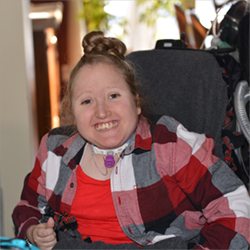
We were at the children’s hospital she had gone to her entire life, and they told us that she would need to transition to an adult provider by age 21. Up until this point, we thought she would be able to receive care at the children’s hospital until she was 26 – so suddenly, we were up against a much shorter clock than I had previously anticipated.
The process of transitioning a medically complex child into adulthood is not a straightforward task that magically works itself out at the right time. Quite contrary, this intentional shift takes a good amount of planning and conversation from various individuals involved in a child’s life, and you can’t be too proactive in looking at the different areas that will require attention and action.
Buckets of transition
When looking at how we’ve gone about transitioning Tana into adulthood, it can be grouped into 4 categories:
Hospitals
This was one of the biggest questions we had in transitioning to adult care – which hospital will she go to when she needs to be admitted? Who can meet the complex needs she has? Are there specialists available that can manage her care? Will the emergency department be prepared for a patient like Tana?
Providers
At what age do Tana’s doctors require her to transition to an adult provider? This has varied quite a bit depending on the doctor, but finding new providers can be a difficult and time consuming process because they are not all comfortable with the level of complexity that Tana has.
Once a provider is identified, starting with a new physician is not a simple or straightforward process (as any parent with a medically complex child can relate to). As much as they may know about spina bifida or tracheostomies, and her co-morbidities, they don’t know it as it relates to Tana, so those first appointments require educating the physician on her history, medications, medical cares, and other details that her pediatric physicians already knew. It’s like starting over again as they begin to understand her unique complexities. Having detailed, updated medical records is extremely helpful.
Personal
Tana is an individual with her own opinions and preferences, and she gets to make her own choices in who she maintains relationships with as an adult. She can stay in touch with or distance herself from the people she chooses, and I’ve made sure to give her this freedom.
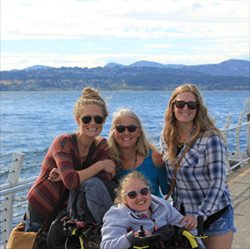
We’ve also started to explore independent living for Tana. She would like to have her own place one day, and I want that for her as well – but logistically, it currently isn’t an option. Because she requires 24/7 nursing, I fill several of her home care nursing shifts due to the nursing shortage. She would need significantly more staffing before it would be feasible for her to live outside our home. While group homes are an option for some, it’s not a good fit for Tana due to the amount of care she requires and the rapid rate that her health can change. Part of the reason Tana has been so healthy is because I can see very subtle changes in her, and that can make a big difference in implementing interventions before it becomes a major issue.
When Tana turned 18 we discussed guardianship and conservatorship. She has chosen not to have guardianship currently and wants to be independent – she has her own financial accounts that I help manage and we work together to understand her needs, insurance, and other duties she holds as an adult.
Professional
As Tana got closer to graduating from high school, we had to determine what the next step was for her and landed on a 3-year program that has fit her needs very well. The focus is on continued education and assisting in her transition to working and independence, which has really helped her discover an interest in doing speaking engagements with the assistance of PowerPoint and her Dynavox device.
Starting the conversation early
My biggest piece of advice if you are the parent of a child with medical needs is to start planning for their adulthood long before you think you need to. Start this planning before they are 16. Like I said before, it’s not that we were shocked when Tana turned 18 and was suddenly an adult – but if we had been really informed about the cutoffs for her different providers and healthcare systems, we could have prepared for this process in a much more methodical way to make the transition smoother.
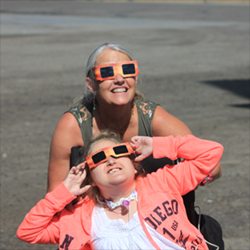
As a first step, start talking to your child’s current physicians – understand when they stop seeing pediatric patients (we’ve found this can really vary from ages 18 to 21 to 26 depending on the provider), then ask for assistance with finding adult providers. Get referrals to make the process of finding a physician who is prepared to manage your child’s care less stressful. Know which hospital he or she will be admitted to, and if they have the right specialists to make it a good fit.
Work with your child’s education team to ensure their needs are being met by keeping the IEP up to date, explore educational opportunities that fit the needs of your child upon graduation, and seek outside resources who specialize in these transitions and offer educational sessions to assist in decision making.
An increasing need
15 years ago, we did not have the survival rates amongst medically complex children that we do today. As the number of children approaching adulthood continues to grow, it’s imperative that the health care community is prepared to successfully transition and care for these adults. As parents and advocates for our children, we must have the conversations early and often with those providing care to help facilitate a smooth transition into adulthood.
Today, Tana looks ahead to years of travelling, enjoying her hobbies, and speaking opportunities – reminding us of the importance this transition will play in ensuring she remains healthy and well cared for in the future.
————————————————————————————————————————————-
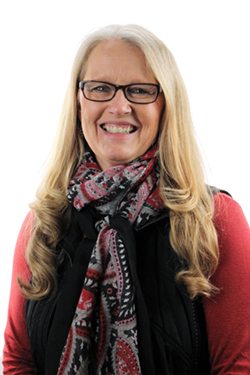 Jill Wall is a Certified Registered Nurse of Infusion (CRNI), working at Pediatric Home Service as Infusion Educator, and is licensed in Minnesota and Wisconsin. She is a member of Infusion Nursing Society, Pediatric Palliative Care Coalition of MN, National Home Infusion Association, Minnesota Network of Hospice and Palliative Care, and MNSHEP. She has co-authored ASPEN, INS and Society of Pediatric poster presentations, provided collaboration in development of NHIA “Home Based Pediatric Patient CVAD Care”, and was one of four authors in the JAVA article, “Central Vascular Access Device Guidelines for the Pediatric Home-Based Patient: Driving Best Practices”. She is also involved with “EMS: Train the Trainer”, collaboration with local EMS, to educate infusion care of complex pediatric patients. Jill graduated with a BSN in nursing from Viterbo College in LaCrosse, Wisconsin in 1983.
Jill Wall is a Certified Registered Nurse of Infusion (CRNI), working at Pediatric Home Service as Infusion Educator, and is licensed in Minnesota and Wisconsin. She is a member of Infusion Nursing Society, Pediatric Palliative Care Coalition of MN, National Home Infusion Association, Minnesota Network of Hospice and Palliative Care, and MNSHEP. She has co-authored ASPEN, INS and Society of Pediatric poster presentations, provided collaboration in development of NHIA “Home Based Pediatric Patient CVAD Care”, and was one of four authors in the JAVA article, “Central Vascular Access Device Guidelines for the Pediatric Home-Based Patient: Driving Best Practices”. She is also involved with “EMS: Train the Trainer”, collaboration with local EMS, to educate infusion care of complex pediatric patients. Jill graduated with a BSN in nursing from Viterbo College in LaCrosse, Wisconsin in 1983.
Before joining PHS infusion team in 2007, Jill utilized her nursing degree in the specialty areas of gyn, labor & delivery, newborn nursery, prenatal education, perinatal grief counseling, and pediatric home nursing care. Additionally, Jill has the blessing and unique perspective as a parent of a medically complex daughter.
Originally published: March 6, 2018